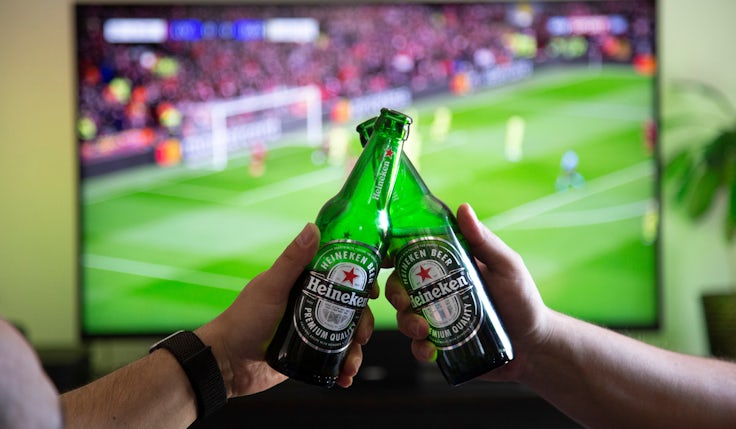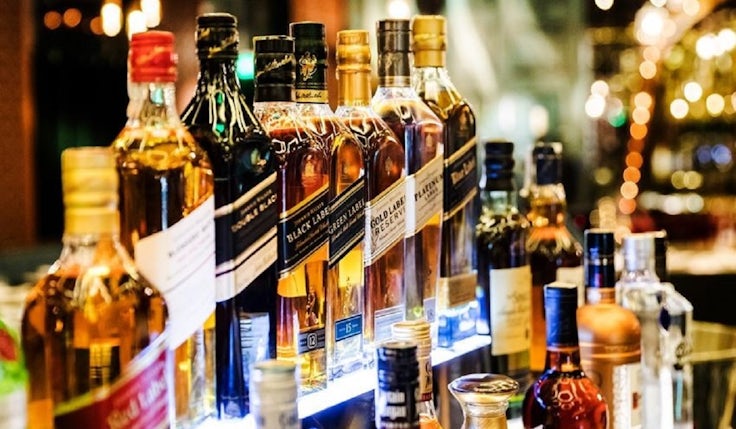Carlsberg to step up marketing investment behind ‘strategic growth priorities’
Despite the challenges of inflation and the war in Ukraine, The Carlsberg Group is continuing to invest in premiumisation and strengthening its alcohol-free portfolio.
 The Carlsberg Group is planning to “accelerate” investment in marketing across the business in the second half of the year, after bumping up spend in the six months to 30 June 2022.
The Carlsberg Group is planning to “accelerate” investment in marketing across the business in the second half of the year, after bumping up spend in the six months to 30 June 2022.
The group, which owns beer and alcohol brands such as Estrella, San Miguel and Somersby cider, as well as the Carlsberg brand, told investors in an earnings call today (17 August) that its marketing investment was up by 14% organically in the first half of 2022.
Despite challenges from inflation and the war in Ukraine, Carlsberg is far from the only drinks company to be betting on marketing to drive growth. Earlier this month, rival Heineken revealed it had upped marketing spend by 28.5% in the first half of 2022. Last month, AB InBev attributed its rising profits in the second quarter of this year partly to its own increased marketing spend.
Carlsberg’s revenue grew by 20.7% in the first half of the year to DKK 35.45bn (£4.01bn). Operating profit saw organic growth of 31.8% to DKK 6.42bn (£728m), while its operating margin improved by 170bp to 18.2%.
Volume, revenue and operating profit in H1 2022 were all ahead of figures from H1 2019, before the coronavirus pandemic began.Diageo attributes soaring profits to marketing spend boost and premiumisation strategy
The business’s CFO Heine Dalsgaard told investors these “strong financial results give us the capacity to accelerate our investments in our SAIL’27 strategic growth priorities”.
SAIL’27 is Carlsberg’s five-year strategy, which it announced in February of this year. The strategy sees it focus on five “strategic levers”: portfolio, geographies, execution, culture and funding.
In terms of its portfolio strategy, the business is looking to grow in its premium brands, alcohol-free brews, core beer and beyond-beer offering. CEO Cees ‘t Hart said the business had seen “good progress” on premium and alcohol-free beer in the first half of the year.
Premium beer brands Tuborg and Carlsberg saw 14% and 20% volume growths, respectively.
Hart added that the business was “optimistic about driving premiumisation” through its online B2B platform ‘Carl’s Shop’. The B2B offering is now available in 11 markets across Carlsberg’s three regions. It saw 84% volume growth in H1, with the company reporting that data-driven recommendations are supporting its drive towards premiumisation.
SAIL’27 saw Carlsberg lay out its strategic priorities for each of the three regions it operates in. In Western Europe, it highlighted premiumisation and driving increased margins as its priorities. The UK was highlighted as one market with potential for particular growth.
As pubs continue to recover from the pandemic, the UK saw 20% on-trade volume growth “on the back of easy comps”. However, in the off-trade, there was a high single digit volume decline in the UK. The trend of strong post-pandemic on-trade growth and weaker off-trade growth is continued across many of Carlsberg’s market.Carlsberg shows how attitudes have changed since admitting it wasn’t the best beer in the world
The alcohol-free brews category saw its volume decline by 3% in the first half, which is partly explained by a weaker off-trade performance, as the business says the category performs better in this channel than in the on-trade. Alcohol-free brews also normally perform particularly well in Ukraine, says the business – excluding the country, the category saw 4% volume growth in the half.
To execute the priorities outlined in its SAIL’27 strategy, Carlsberg has committed to improving its capabilities. It highlighted digital marketing, e-commerce and data and analytics as areas that it wants to “ensure [its] competitiveness” in.
Facing an uncertain future
CFO Dalsgaard admitted that Carlsberg is expecting “weaker earnings progression” in the second half of the year.
“Increasing commodity and energy prices will have a higher impact on our cost of sales in the second half,” he said. “While we will increase prices across our markets, these price increases will time lag the input cost increases.”
In terms of consumer behaviour, he insisted that Carlsberg is only seeing “very limited change in purchasing patterns”. He added that the company didn’t expect to see a lot of downtrading for the rest of this financial year.
“Of course, we don’t know what 2023 will bring,” he said, admitting that there is a “risk” of downtrading and lower volumes.
The Carlsberg Group are well-prepared for this, the business maintains. Dalsgaard pointed to the resilience of the beer-category as well as the range of price-points among Carlsberg’s brands, meaning that if consumers do downtrade they can do it within the company’s portfolio.
“In this environment, we’ll continue to seek the right balance between mitigating the short-term challenges and investing in the long-term opportunities behind our SAIL’27 priorities to deliver on our ambitions for top- and bottom-line growth. Despite challenging market conditions, we’re staying the course,” said Hart.








Comments